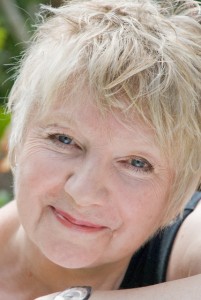By Joseph Salazar.
March is Women’s History Month. This year’s theme is “Women Inspiring Innovation Through Imagination: Celebrating Women in Science, Technology, Engineering and Mathematics”.
Women today currently earn 41% of PhD’s in STEM fields, but make up only 28% of tenure-track faculty in those fields. Keeping that startling statistic in mind and in celebration of this year’s theme, I’d like to take the opportunity to introduce you to some of the women at UMKC who are a part of STEM fields. I had the wonderful opportunity of learning about what it’s like to be a woman in STEM through a Q&A with several faculty members at UMKC.
 Ann Smith, Professor—School of Biological Sciences
Ann Smith, Professor—School of Biological Sciences
Why did you go into your field? I have always been interested in science and the natural world – even as a young child. When I was about ten years old, my father took me to the Natural History Museum in London where I drew the stuffed animals and birds and saw fossils for the first time. My father and I also went together by train to the south coast of England to dig in quarries where we found fossils of sea urchins and also a meteorite that I treasure to this day. We had to leave behind a huge (to my eyes) ammonite fossil that the workers had blasted out of the ground because we did not have a car and it was too heavy to carry!
What are your research interests? I am currently interested in how the cells of our bodies, especially those of our brain, control and safely manage the balance between metals: heme, iron itself and copper. These metals are vital for our cells but they are also very chemically reactive and thus potentially dangerous. They are known to cause and exacerbate disease including neurodegeneration. I hope that the heme transporter that I work on, hemopexin, which means heme fixer or grabber, can be used therapeutically and perhaps diagnostically in the near future.
What was being a woman in that field like when you entered? I started my independent research for my Ph.D. thesis in the mid-1960s when there were far fewer women than men in science. Everybody, whether male or female flourishes with good mentoring and I was fortunate that at King’s College, which is part of the University of London, that I had a Ph.D. advisor and a senior Professor who were very supportive of me and my research efforts. They encouraged me in every way and helped me get together (that is, my advisor paid for) some unique lab resources so that I could get my research done. These included having two 6 foot high cabinets specially built that allowed me to perfuse rat livers to keep them alive in order to study drug metabolism. This included work on a family of enzymes, biological catalysts and the cytochrome P-450 enzymes that are currently under investigation as therapeutic drug targets in cancer.
What is it like being a woman in your field today? There have been changes on the international scene of science and I would say that gender is no longer an issue. Unfortunately, discrimination can and still does occur, perhaps most in situations of confidentiality – such as when one’s grants are reviewed and there is no appeal system in place.